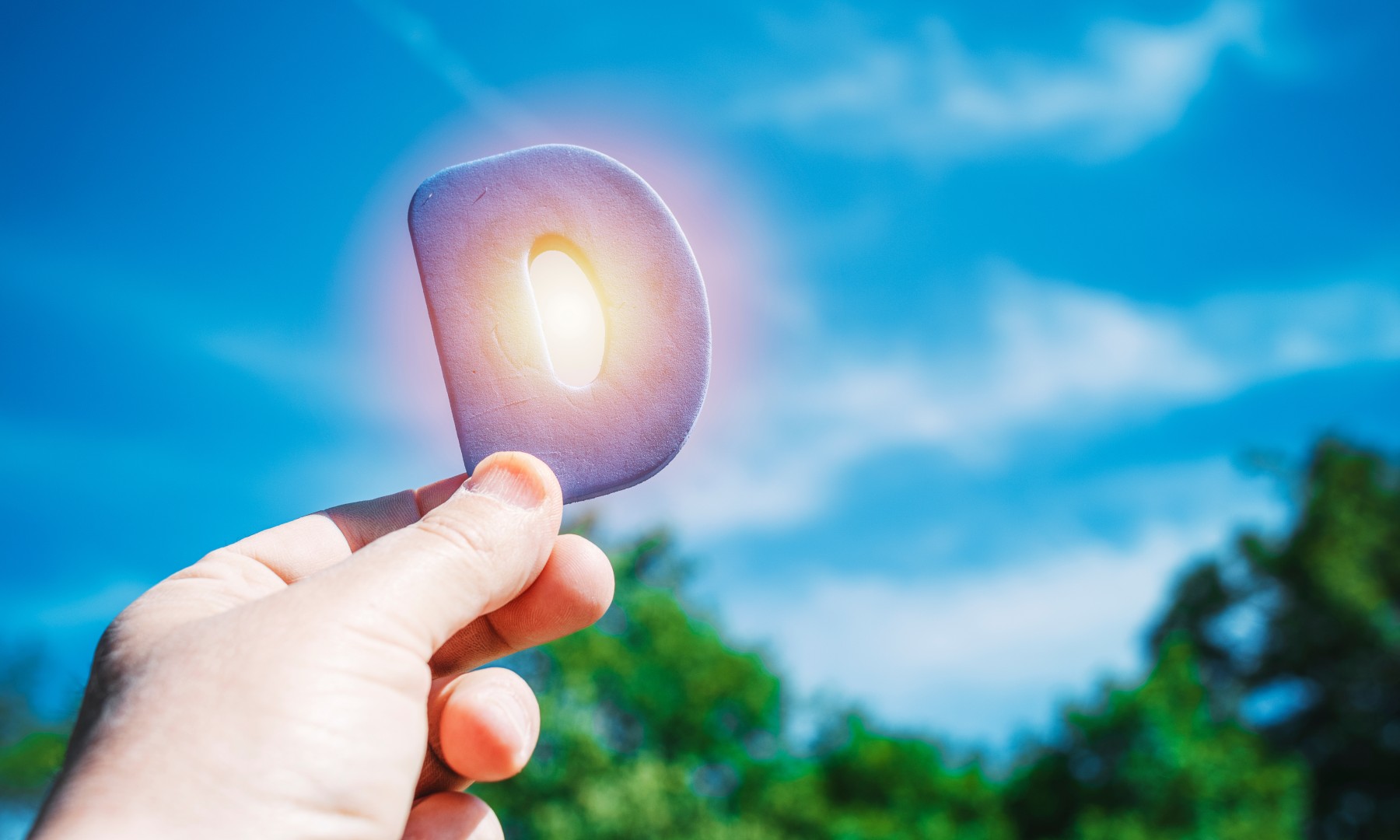How Much Sunlight Do You Need for Healthy Vitamin D Levels?

Vitamins and minerals are crucial for our overall health and well-being. We need them to strengthen bones, heal wounds, optimize organ functions, repair damaged cells, prevent congenital birth defects, and boost the immune system.
Minerals and vitamins, cumulatively known as micronutrients are needed in small amounts by the body as they produce many enzymes and hormones, which can play a crucial role in various bodily activities. Failing to get even these small quantities may cause numerous diseases. There are 13 essential vitamins, including vitamins A, C, D, E, K, and vitamin B complex (thiamine, riboflavin, niacin, pantothenic acid, biotin, B6, B12, and folate), which keeps our body healthy.
Vitamin D: The Vitamin from the Sun

Vitamin D, also called the sunshine vitamin as sunlight is its principal source. Our skin produces vitamin D from direct sunlight. We can also get vitamin D from various dietary sources.
Importance of vitamin D
Vitamin D is a group of fat-soluble vitamins (D1, D2, and D3) that play roles in various bodily functions. It helps our body absorb and retain calcium and phosphorus, which are critical for bone growth, teeth development, and muscle health. It also strengthens the immune system, reducing the risk of diseases such as multiple sclerosis, respiratory distress syndrome, and viral infections like COVID-19.
Low vitamin D levels may increase the risk of infectious and autoimmune diseases, including cardiovascular diseases, type 1 diabetes, cancer, rheumatoid arthritis, inflammatory bowel disease, and Parkinson’s disease. A 2019 meta-analysis of 7,534 participants from 25 trials showed that vitamin D supplementation reduced symptoms of depression and anxiety.
Despite its physiological and psychological importance, vitamin D deficiency is common globally. Studies suggest that around 50% of the world’s population has vitamin D deficiency, with prevalence rates ranging from 20-90% in regions like the Middle East, Europe, and the USA.
Ideal requirement of vitamin D for optimal health

Infants (0-1 year): 8.5-10 mcg (400 IU) daily
Children (1-70 years): 15 mcg (600 IU) daily
Adults (71+ years): 20 mcg (800 IU) daily
Pregnant or breastfeeding women: 15 mcg (600 IU) daily
Dietary Sources of Vitamin D
Fatty fish (sardines, mackerel, swordfish, salmon)
Cod liver oil
Egg yolks
Fortified food products (cereals, dairy products)
How to get vitamin D from the sunlight without risking excessive sun exposure?
Upon exposure to sunlight, our body converts 7-dehydrocholesterol to cholecalciferol (vitamin D). Although our body can produce vitamin D in sunlight, still vitamin D deficiency is the most common vitamin deficiency. This deficiency is due to our modern lifestyle habits. We tend to stay inside all day or use sun protection devices while we are under the sun.
Most of us are unaware of the ways to have adequate vitamin D without the risk of excessive sun exposure.
We can keep the points mentioned below in mind and get the maximum benefit of sun rays.
The best time to go out in the sun
According to various experts, absorption of UVB rays is essential for vitamin D production. In early mornings and late evenings, UVB rays are blocked. Experts suggest that UVB rays, essential for vitamin D production, are best absorbed between 10 AM and 3 PM. Sun exposure later in the day increases the risk of skin damage and certain cancers.
What body parts are safe to have sun exposure?
A person wearing clothes covering most of the skin is at risk for vitamin D deficiency. The synthesis of vitamin D is from cholesterol in the skin, which means maximum skin exposure to sun rays should be there to obtain enough vitamin D.
Therefore, get as much vitamin D as possible by exposing your legs, arms, and abdomen, and make sure your back is directly exposed to the sun's rays so that your body can produce as much vitamin D as it can.
Do not forget to wear a hat, scarf, and sunglasses to protect your face and eyes during sunbathing.
How long should we spend in the sun for optimal vitamin D absorption?
The vitamin D absorption from our skin depends on its color. Melanin pigment, responsible for our skin color, protects skin from UV rays. Therefore, light skin color (scanty melanin pigment) needs less sun exposure than dark skin people (high melanin pigment).
Vitamin D council health professionals suggest light skin toned people spend no more than 15 minutes in the sun, while people with dark skin tones can spend up to an hour in the sun.
Does sunscreen affect vitamin D absorption?
Sunscreens protect our skin from different spectrum of sun rays, including UVB rays. Sunscreen with SPF 30 or higher can reduce vitamin D production by 95-98%. If using sunscreen, aim for brief sun exposure before application.
Frequently Asked Questions (FAQs)
1. Can I get enough vitamin D from my diet alone?
While some foods are rich in vitamin D (e.g., fatty fish, fortified dairy, egg yolks), diet alone is often insufficient. Sun exposure or supplements may be necessary, especially in regions with limited sunlight.
2. How do I know if I have a vitamin D deficiency?
Common symptoms include fatigue, muscle weakness, bone pain, and frequent infections. A blood test measuring 25-hydroxyvitamin D levels can confirm deficiency.
3. Can too much vitamin D be harmful?
Yes. Excess vitamin D (above 4,000 IU daily for adults) can lead to hypercalcemia, causing nausea, kidney issues, and calcium buildup in the blood.
4. Do artificial UV lamps help in vitamin D synthesis?
Yes, UVB lamps can stimulate vitamin D production but should be used cautiously due to skin cancer risks. Always consult a healthcare professional before using them.
5. Who is at the highest risk of vitamin D deficiency?
People with limited sun exposure, darker skin tones, older adults, pregnant women, and individuals with conditions like celiac disease or Crohn’s disease are at higher risk.
Conclusion
Optimal vitamin D levels help prevent many conditions and strengthen our immune system to combat new threats. Sunbathing is the prime source of vitamin D. In addition to sun exposure, certain food products, and supplements also fulfill the required vitamin D in our body. But excess of everything is not good and sunlight exposure is no exception. Follow the above sunbathing techniques and enjoy a healthy and happy life.
References:
Holick, M. F. (2007). Vitamin D deficiency. New England Journal of Medicine, 357(3), 266-281. https://doi.org/10.1056/NEJMra070553
Moyad, M. A. (2009). Vitamin D: A rapid review. Dermato-Endocrinology, 1(1), 6-10. https://doi.org/10.4161/derm.1.1.7417
Pludowski, P., Holick, M. F., Pilz, S., Wagner, C. L., Hollis, B. W., Grant, W. B., Shoenfeld, Y., & Lerchbaum, E. (2018). Vitamin D effects on musculoskeletal health, immunity, autoimmunity, cardiovascular disease, cancer, fertility, pregnancy, dementia, and mortality—a review of recent evidence. Autoimmunity Reviews, 17(6), 617-632. https://doi.org/10.1016/j.autrev.2018.01.002
Krieger, L. (2019). The best time of day to get vitamin D from sunlight. Harvard Health Blog. https://www.health.harvard.edu/blog/the-best-time-of-day-to-get-vitamin-d-from-sunlight-2019072417416
Autier, P., Boniol, M., Pizot, C., & Mullie, P. (2014). Vitamin D status and ill health: A systematic review. The Lancet Diabetes & Endocrinology, 2(1), 76-89. https://doi.org/10.1016/S2213-8587(13)70165-7
Głąbska, D., Kołota, A., Lachowicz, K., Skolmowska, D., Guzek, D., & Łuszczki, E. (2021). The influence of vitamin D intake and status on mental health in children: A systematic review. Nutrients, 13(9), 2986. https://doi.org/10.3390/nu13092986
Vitamin D Council. (2020). How long should you spend in the sun for vitamin D? Vitamin D Council. https://www.vitamindcouncil.org/how-long-should-you-spend-in-the-sun-for-vitamin-d/






